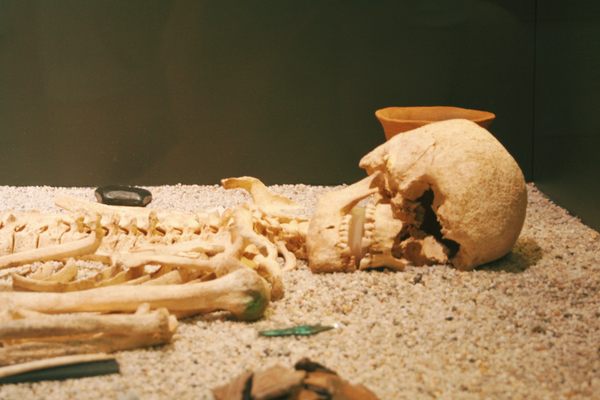About
During the summer of 1998, shifting sands on Holme beach on the north Norfolk coast in eastern England revealed the remains of an early Bronze Age timber circle. At the center of the circle was a large upturned tree stump. The strange site soon became known as “Seahenge.”
Scientific dating techniques have shown that the structure was erected in the spring of 2049 BC. The timbers were in the form of a ring 21 feet (6.6 meters) in diameter and comprised 55 closely-fitted oak posts, each originally up to 10 feet (three meters) high.
There’s no evidence pointing toward Seahenge actually being a henge, and the exact purpose of it will never be known for certain. Many archaeologists believe it was used for the burial of an important person, with the body laid out on the upturned stump for animals to pick clean before the corpse was interred elsewhere.
Originally constructed on salt marshes, this modern-day discovery was on a beach on the North Sea, submerged twice daily by tidal waters. Much to protests from some locals and irate Neopagans, the newly-exposed Seahenge was removed from its original site to preserve it from decay.
After years of treatment, the wooden timbers are now on display at the nearby Lynn Museum, where they are maintained in a controlled environment and on public display, alongside a full-sized modern reconstruction of the site.
Seahenge is also known as Holme I. Shortly after its discovery, another older circle of timbers was found. Comprising two concentric timber circles, surrounding a pit housing two oak logs, this site was named Holme II, although unlike Seahenge, this structure was left in-situ.
Related Tags
Know Before You Go
The Lynn Museum (in King's Lynn, Norfolk, England) is located on the concourse of the town's main bus station and only about a five-minute walk from the town's railway station, which has direct services to Cambridge and London's King's Cross stations.
Community Contributors
Added By
Published
March 4, 2019




























